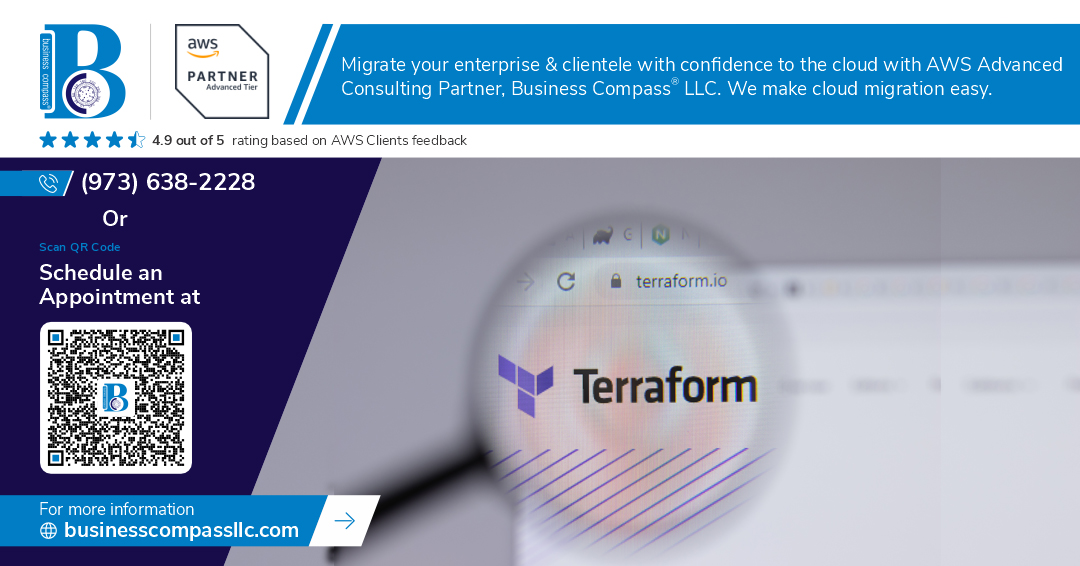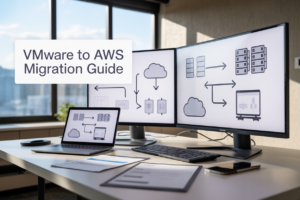Managing AWS security groups with Terraform can hit unexpected roadblocks when you run into rule limits. For DevOps engineers, cloud architects, and infrastructure teams using Terraform to manage AWS resources, understanding these constraints is crucial for smooth deployments.
When Terraform apply fails due to AWS security group rule limits, it can derail your entire deployment pipeline. These failures often catch teams off-guard, especially when scaling infrastructure or managing complex networking setups across multiple environments.
This guide covers everything you need to know about navigating these challenges. We’ll explore how AWS security group rule quota works and why Terraform apply security group errors happen in the first place. You’ll also learn proven strategies for Terraform security group management that prevent limit issues before they occur, plus troubleshooting techniques to quickly resolve failures when they do happen.
Understanding AWS Security Group Rule Limits and Their Impact
Default rule limits per security group
AWS sets a default limit of 60 inbound and 60 outbound rules per security group, giving you 120 total rules to work with. While you can request increases up to 1,000 rules per group through AWS Support, hitting these limits often signals that your security group design needs refinement. Most applications work perfectly within the default limits when rules are properly structured. Terraform apply operations will fail if you try to exceed your current quota, so monitoring rule counts becomes critical for automation pipelines.
Maximum number of security groups per network interface
Each EC2 network interface can have up to 5 security groups attached, creating a maximum potential of 6,000 rules (5 groups × 1,200 rules each if you’ve requested increases). This limit affects how you architect your Terraform security group management, especially in complex multi-tier applications. When you hit this limit, Terraform apply will throw errors during resource creation or updates. Smart organizations plan their security group architecture around these constraints from day one rather than refactoring later.
Performance implications of exceeding recommended limits
Large numbers of security group rules create noticeable performance impacts on your AWS infrastructure. Network packet processing slows down as the hypervisor evaluates hundreds of rules for each connection attempt. EC2 instance launch times increase when multiple security groups with extensive rule sets are attached. Your Terraform apply operations also take longer to complete as AWS API calls process complex security group configurations. Real-world testing shows that staying under 30-40 rules per group maintains optimal performance while still providing comprehensive security coverage.
Cost considerations for rule management
While security group rules don’t incur direct charges, their complexity drives hidden costs throughout your infrastructure. Overly complex rule sets increase troubleshooting time when connectivity issues arise, translating to higher operational expenses. Terraform state files grow larger with extensive security group configurations, potentially affecting CI/CD pipeline performance and storage costs. Teams spend more time managing and auditing complex rule sets instead of focusing on feature development. Simplified security group architectures reduce these indirect costs while maintaining strong security postures across your AWS infrastructure.
How Terraform Apply Interacts with Security Group Rules
Terraform’s approach to managing security group changes
Terraform handles AWS security group rule modifications through a declarative approach, comparing the desired state in your configuration files against the current infrastructure state. When you run Terraform apply security group errors can occur if AWS VPC security group best practices aren’t followed. The tool calculates the differences between your .tf files and existing resources, then creates an execution plan that shows exactly which security group rules will be added, modified, or removed. This process helps prevent unexpected changes and gives you visibility into how your Terraform security group management operations will affect your infrastructure.
Batch processing vs individual rule updates
Terraform AWS security group rules are processed differently depending on the change type and resource configuration. Terraform groups rule changes when possible to minimize API calls and reduce the risk of hitting AWS security group rule limits. For inline rules defined within the security group resource block, Terraform treats them as a single unit and replaces the entire rule set. However, when using separate aws_security_group_rule resources, each rule is managed individually, allowing for more granular updates but potentially increasing the number of API calls. This distinction becomes critical when managing large rule sets that approach the AWS security group rule quota.
State management for large rule sets
Managing state files for environments with extensive security group configurations requires careful planning to avoid Terraform apply failures AWS scenarios. Terraform stores metadata about each security group rule in its state file, including rule IDs, descriptions, and dependencies. Large rule sets can create substantial state files that impact performance during plan and apply operations. Security group rules optimization becomes essential when dealing with hundreds of rules across multiple security groups. Breaking down monolithic security group configurations into smaller, focused groups helps Terraform manage state more efficiently and reduces the likelihood of timeout errors during AWS security group troubleshooting scenarios.
Common Scenarios That Trigger Security Group Limit Issues
Auto-scaling applications with dynamic IP ranges
Auto-scaling groups create a perfect storm for AWS security group rule limits when applications dynamically add and remove IP addresses. Each scaling event can trigger Terraform to modify security group rules, quickly approaching the 60-rule limit per security group. Applications that scale based on traffic patterns often experience Terraform apply failures during peak usage periods when rule modifications coincide with AWS quota constraints.
Multi-environment deployments sharing security groups
Shared security groups across development, staging, and production environments accumulate rules rapidly as teams add environment-specific access patterns. Terraform apply operations fail when multiple environments attempt simultaneous rule updates, especially in organizations using centralized security group management. The 60-rule AWS limit becomes a bottleneck when supporting multiple application tiers across different environments within the same VPC infrastructure.
Legacy infrastructure migrations to Terraform
Migrating existing AWS infrastructure to Terraform often reveals sprawling security group configurations that exceed modern best practices. Legacy setups frequently contain redundant rules, overly permissive CIDR blocks, and complex rule interdependencies that push security groups beyond AWS limits. Terraform state imports during migration can fail when existing security groups contain more rules than Terraform can manage effectively within AWS constraints.
Microservices architectures with complex networking
Microservices deployments create intricate security group rule requirements as services need granular communication permissions between pods, load balancers, and databases. Container orchestration platforms like EKS generate dynamic networking requirements that can overwhelm security group rule quotas. Terraform struggles to maintain consistent security group states when microservices scaling events trigger rapid rule additions and deletions across multiple security groups simultaneously.
Best Practices for Optimizing Security Group Rule Management
Consolidating rules using CIDR blocks effectively
Smart CIDR block consolidation dramatically reduces AWS security group rule limits while maintaining security posture. Instead of creating individual rules for each IP address, group related addresses into broader CIDR ranges. For example, replace ten separate /32 rules with a single /24 range when securing office networks. This approach works particularly well for Terraform AWS security group rules where you’re managing multiple environments. Consider creating tiered CIDR strategies: narrow ranges for production databases (/28) and broader ranges for development resources (/24). Always validate that consolidated ranges don’t accidentally expose unintended resources.
Leveraging referenced security groups instead of IP ranges
Referenced security groups eliminate the need for hardcoded IP addresses and bypass AWS security group rule quota limitations. When you reference another security group as a source, AWS treats it as a single rule regardless of how many instances belong to that group. This technique proves invaluable for Terraform security group management in dynamic environments where instances frequently change IP addresses. Create dedicated security groups for different application tiers (web, application, database) and reference them in your rules. This pattern scales infinitely without hitting rule limits and automatically adapts when instances are added or removed from the referenced groups.
Implementing rule inheritance patterns
Rule inheritance patterns create hierarchical security structures that minimize duplicate rules across security groups. Start with base security groups containing common rules (SSH access, monitoring agents, logging) and attach them to resources alongside specific security groups. This layered approach reduces overall rule count while maintaining granular control. For instance, create a “base-web-sg” with HTTP/HTTPS rules and a “base-admin-sg” with management access, then combine them with application-specific security groups. Terraform modules can automate this pattern, ensuring consistent application of inherited rules across your infrastructure while staying within AWS VPC security group best practices.
Creating reusable security group modules
Reusable Terraform security group modules standardize rule creation and prevent AWS security group rule limits through consistent patterns. Build modules that accept dynamic inputs for ports, protocols, and source ranges while embedding optimization logic internally. These modules should automatically choose between CIDR consolidation and security group references based on input parameters. Include validation rules that warn when approaching rule limits and suggest alternatives. Well-designed modules reduce infrastructure code duplication by 60-80% while ensuring security group rules optimization across all deployments. Version your modules to track changes and maintain backward compatibility as your security requirements evolve.
Troubleshooting Terraform Apply Failures Due to Rule Limits
Identifying limit-related error messages
AWS throws specific error messages when Terraform apply operations hit security group rule limits. Look for “Rules per security group limit exceeded” or “VpcLimitExceeded” errors in your Terraform output. These messages typically include the current rule count and maximum allowed rules per security group. The AWS security group rule quota varies by region and account type, with standard limits around 60 inbound and 60 outbound rules per security group. Pay attention to error codes like RulesPerSecurityGroupLimitExceeded which clearly indicate you’ve hit the AWS VPC security group best practices threshold.
Using Terraform plan to preview rule changes
Running terraform plan before applying changes helps you spot potential Terraform apply security group errors before they occur. The plan output shows exactly how many rules will be added, modified, or removed from each security group. This preview allows you to calculate whether your changes will push you over the rule limits. When managing multiple security groups, use terraform plan -target to focus on specific resources and get detailed rule count information. The plan command also reveals rule consolidation opportunities where multiple similar rules can be combined into single CIDR blocks.
Implementing gradual deployment strategies
Break large security group changes into smaller batches to avoid hitting AWS security group rule limits during Terraform infrastructure security groups deployment. Deploy rules in phases using Terraform workspaces or separate configuration files. Start with the most critical rules and gradually add others in subsequent apply operations. Use Terraform’s -parallelism flag to control concurrent operations and reduce the chance of race conditions. Consider implementing blue-green deployment patterns for security groups where you create new groups with updated rules before switching traffic. This approach provides rollback capabilities and prevents service disruptions when Terraform apply failures AWS occur during large-scale updates.
Advanced Strategies for Large-Scale Security Group Management
Implementing security group rule splitting techniques
When your AWS security group rules approach the 60-rule limit, splitting becomes essential for maintaining Terraform infrastructure security groups. Create multiple security groups with specific purposes – one for HTTP/HTTPS traffic, another for database connections, and separate groups for internal communication. This approach prevents Terraform apply security group errors while maintaining granular control. Use descriptive naming conventions like app-web-sg and app-db-sg to identify rule purposes quickly. Link security groups together using cross-references in your Terraform configurations, allowing complex rule sets to span multiple groups without hitting AWS security group rule limits.
Using Terraform workspaces for environment isolation
Terraform workspaces provide powerful isolation for managing security group rules across development, staging, and production environments. Each workspace maintains separate state files, preventing cross-environment conflicts when applying Terraform security group management changes. Configure workspace-specific variables to adjust rule counts and IP ranges based on environment needs. Production workspaces typically require more restrictive rules with specific IP ranges, while development environments can use broader CIDR blocks. This isolation strategy reduces the risk of Terraform apply failures AWS encounters when managing large-scale deployments across multiple environments simultaneously.
Automating rule cleanup and optimization processes
Implement automated processes to identify and remove unused security group rules before they accumulate and trigger AWS security group rule quota issues. Create Terraform modules that audit existing rules against active resources, flagging orphaned or redundant entries. Schedule regular cleanup jobs using AWS Lambda functions or CI/CD pipelines to scan for unused security groups and consolidate duplicate rules. Use Terraform’s terraform plan output to identify rule changes and their impact on overall rule counts. This proactive approach to AWS VPC security group best practices prevents rule limit surprises during critical deployments and maintains optimal infrastructure performance.
AWS security group rule limits can catch even experienced developers off guard, especially when using Terraform to manage infrastructure. The default limits of 60 inbound and 60 outbound rules per security group might seem generous, but they can fill up quickly in complex environments. When Terraform tries to apply changes that exceed these limits, deployments fail, leaving teams scrambling to figure out what went wrong.
Smart security group management comes down to planning ahead and staying organized. Break down large security groups into smaller, focused ones based on application tiers or specific functions. Use CIDR blocks instead of individual IP addresses whenever possible, and regularly audit your rules to remove anything outdated. When you hit limits during Terraform deployments, the solution usually involves restructuring your security groups rather than trying to cram more rules into existing ones. Keep these strategies in mind, and you’ll save yourself from those frustrating late-night deployment failures that always seem to happen at the worst possible time.




















